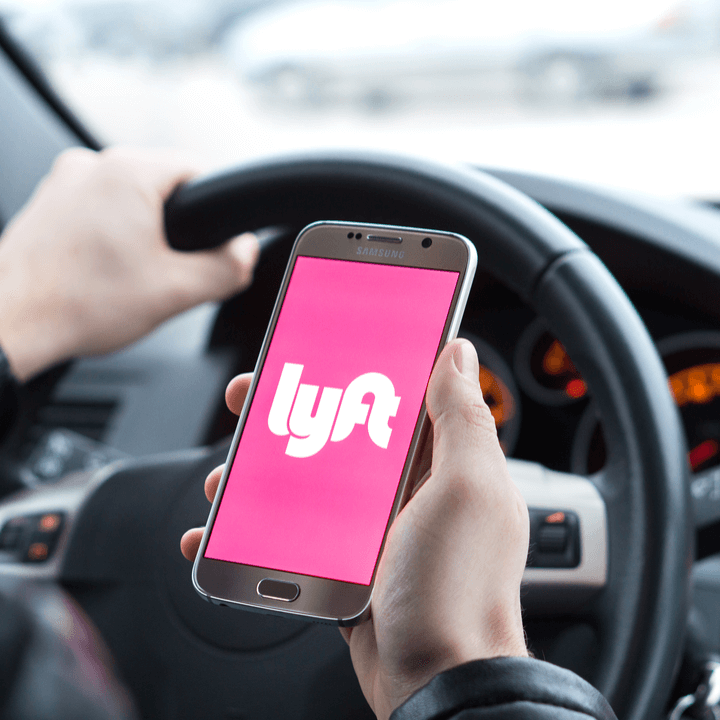
Being a Lyft driver offers benefits, but it also creates a tricky situation for car insurance. You may have no idea that your personal auto insurance isn't covering you but it's true. Personal auto policies do not generally cover rideshare drivers. Lyft insurance is available to drivers while on the job, but there are gaps in coverage you need to be aware of. In this article, we'll cover what Lyft insurance covers, when it's in effect, what gaps you need to be aware of and how rideshare insurance works. You'll also learn more about why your personal insurance policy doesn't protect you during rides and a little about the claims process.
Rideshare driving jobs have increased in popularity in recent years. If you are a rideshare driver, it is important to make sure that you have the proper coverage. Most normal car insurance policies don't cover jobs like Lyft or any transportation network company. So, it's important to research what additional coverage you will need. Call around and see which insurance carrier works best for you.
What is Lyft Insurance?
Lyft does have insurance for its drivers that don't carry a commercial policy on their vehicle. The coverage you receive from Lyft insurance depends on the ride status and the coverage you have on your personal car insurance policy. While drivers may be able to get some coverage through Lyft, it might affect the validity of their own personal car insurance, and there may be gaps in coverage.
For Lyft insurance purposes, a Lyft drive is divided into three periods:
- Period 1: Your Lyft app is on and in driver mode, making you available to accept ride requests
- Period 2: You've accepted a Lyft ride request and are en route to pick up a passenger(s)
- Period 3: You're driving the passenger(s) to the destination; period 3 ends once you drop the passenger(s) off and the ride ends in the Lyft app
To become a Lyft driver, you need to have a personal car insurance policy. You must have valid insurance documents uploaded to the Lyft app to work for Lyft. If your insurance expires, you'll need to upload your new documents.
An important aspect of Lyft's insurance policy is that your coverage depends on whether or not you're in driver mode or completing a ride. Driver mode is something you turn on in the Lyft app that indicates you're available to accept ride requests. Once you're in driver mode, Lyft coverages may be in effect depending on your ride status, but this also means your personal auto insurance may not be in effect.
Do you also drive for another rideshare company? We've got everything you need to know about Uber insurance.
What coverages does Lyft Insurance give rideshare drivers?
When driver mode in the Lyft app is off, your personal auto insurance policy is what is providing your coverages. Once driver mode is on, your personal auto insurance policy cuts off because it is not commercial insurance. That is when your rideshare insurance coverage through Lyft's insurance policy begins to work but specific coverages work at specific times throughout a drive.
- Contingent liability: Lyft's contingent liability coverage works when driver mode is on but you haven't accepted a ride yet. This comes into play if your personal auto insurance doesn't cover you at this time. The maximum coverage is $50,000 per person/$100,000 per accident/$25,000 for property damage. (Period 1)
- Primary auto liability: This coverage is in effect from the time you accept a ride until the ride ends. So, the moment you accept a passenger, the entire time you're on the road until you leave them at their destination, you are protected by Lyft insurance coverage. (Periods 2 and 3)
- Contingent collision: If you’re in an accident, Lyft’s contingent collision coverage kicks in to cover physical damage to your car regardless of who is at fault (as long as you have collision coverage on your personal car insurance policy). It has up to a $2,500 deductible and covers up to the actual cash value of your car or the cost to replace it, whichever costs less. (Periods 2 and 3)
- Contingent comprehensive: Lyft's contingent comprehensive coverage works like the contingent collision coverage, except it covers damage to your car not from a collision. The deductible for this coverage is also up to $2,500. You'll notice that deductibles for these coverages are higher than what you would see with your personal auto policies. (Periods 2 and 3)
- Uninsured/underinsured motorist: This coverage protects you if you get into an accident with a driver who is uninsured or underinsured and is at fault for causing injury to you and/or your passenger(s). (Periods 2 and 3)
What should you do after an accident while driving for Lyft?
If you're involved in an accident while driving for Lyft that results in damage to your car, first and foremost you should check for injuries to all parties involved and call 911 in emergencies. The next step you should take is to collect all contact and insurance information from all parties involved, including contact information from any witnesses.
Like any other accident, when you're in an accident while driving for Lyft, you should call the police to get a police report of your accident. This can be helpful for insurance purposes when determining who was at fault for the accident.
The next step is to contact Lyft to report your accident. This can be done either to Lyft or your personal insurance company to file a claim. The company you contact to cover your collision depends on which period of a Lyft ride you were in.
- Period 1: If you were in period 1, which means you had the Lyft app on but you hadn't accepted a ride yet, you will need to contact your personal insurance company or your rideshare insurance company. Lyft does not offer collision coverage during this period. Be aware that your personal insurance company may deny your claim (if you don't have a rideshare endorsement on your personal policy) since you were driving for Lyft, but a rideshare insurance company will cover this if you have it. You'll be responsible for paying your rideshare insurance or personal car insurance deductible.
- Period 2 or 3: If you were in period 2 (accepted a ride and were en route to pick up the passenger) or period 3 (driving a passenger to destination) you'll want to contact Lyft to utilize Lyft's collision coverage. In this case, you'll be responsible for paying Lyft's insurance deductible.
To report a claim with Lyft, you need to request a call from Lyft’s Claims Customer Care team. You'll need to enter your phone number and Lyft will contact you to report your claim.
Where are the gaps in Lyft insurance?
Lyft insurance is available for drivers while on the job in all U.S. states except rides that start in New York City with a TLC (Taxi and Limousine Commission). Additionally, Lyft insurance coverage may vary depending on the state because of certain state car insurance requirements.
There's a gray area in coverage when you're in between trips and at the beginning of your shift waiting for your first ride request in the Lyft app. At this point (period 1), Lyft's insurance only offers you contingent liability protection. You will not receive collision or comprehensive coverage from Lyft at this time. So what happens if you get into an accident in between trips while waiting for a ride request?
As a Lyft driver, you need to check with your personal car insurance company to see if it will continue to provide you with coverage. Some insurance companies won't provide coverage to Lyft or Uber drivers. If you won't be covered by your company during period 1, you'll need rideshare insurance to receive coverage.
Rideshare insurance is available for drivers who work for Lyft, Uber, or another rideshare company. It offers you more coverage than Lyft insurance offers and covers you in case your personal insurance policy doesn't.
Rideshare insurance will likely cost you more than your traditional car insurance policy, but in return, you're better protected while driving for Lyft. This insurance is not available everywhere and only through a select group of carriers, though that group is expanding. The coverages that come with a rideshare policy are extremely valuable, though, because you and your vehicle will be protected whether you have a passenger or are between rides, which is not the case with your personal policy.
Before you drive for Lyft, be sure to contact your car insurance company to ask about its policy for Lyft drivers. This will help you evaluate if you need to seek other coverages, like rideshare insurance, to have sufficient protection while on the job. Additionally, if you don't alert your personal auto insurer that you're driving for Lyft, it may drop your coverages, meaning all of your policies, like home or renters coverages as well. If you do not communicate 100% honestly with your auto insurance company, they can refuse to sell you policies at all.
Before deciding to become a rideshare driver, be aware that your personal auto policy probably won't be enough coverage. Call your local insurance companies to see who will offer you the best rate. Check to see if there are any insurance policies tailored to rideshare drivers. If not, consider adding protection such as bodily injury, collision insurance, and any other additional coverage. Also, know your policy coverage limits and what it does and does not cover.
Are you a Lyft driver? Does your personal auto insurer cover you while you're driving for Lyft? Let us know by leaving a review of your insurance company.
See which car insurance companies are ranked the best insurance for Lyft drivers.
The content on this site is offered only as a public service to the web community and does not constitute solicitation or provision of legal advice. This site should not be used as a substitute for obtaining legal advice from an insurance company or an attorney licensed or authorized to practice in your jurisdiction. You should always consult a suitably qualified attorney regarding any specific legal problem or matter. The comments and opinions expressed on this site are of the individual author and may not reflect the opinions of the insurance company or any individual attorney.







